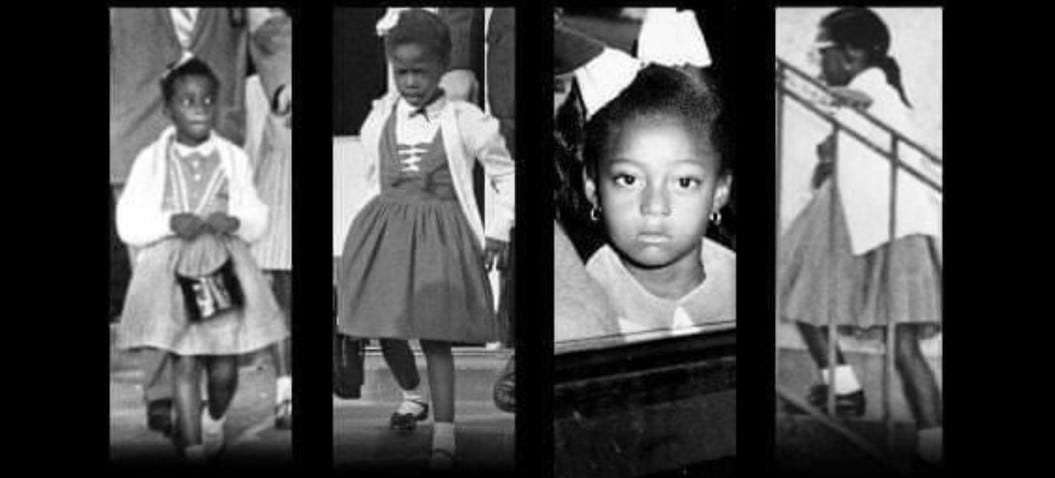There were four girls in New Orleans that day
For decades, most historical accounts of Nov. 14, 1960, featured Ruby Bridges as the sole child crossing hostile lines to attend an all-white school in the Ninth Ward, but there were three others.
At just six years old, four girls underwent psychological and academic evaluation in order to enroll in school. They were part of a pool of 137 children who applied to attend all-white elementary schools in New Orleans.
Days later, wearing dresses with white hair ribbons and laced socks, they would face mobs of angry, white parents who gathered to stop them from integrating McDonogh 19 and William Frantz elementary schools in the Lower Ninth Ward.
The girls were Leona Tate, Gail Etienne, Tessie Prevost, who went to the all-white McDonogh 19, and Ruby Bridges who attended William Frantz alone. For months, they were protected by U.S. Marshals. The day was November 14, 1960, and they were the first students to integrate Louisiana schools.
"I thought it was a Mardi Gras parade,” Prevost said about the mobs. "I thought I’d find people having a good time.” Instead, they were surrounded by hate.
The day before, November 14, 1960, white parents removed their children from the school, and the girls could not have recess outside, drink from a water fountain, or even approach the window for fear of being attacked, said Tate. That year, she, Etienne, and Prevost had McDonogh 19 to themselves for an entire year, because of a white boycott. Two years later, they integrated the all-white T.J. Semmes, without the help of U.S. marshals. The white community fought.
"We were all spit upon," Gail Etienne told NOLA.com. "I had my dress ripped almost completely off of me. I was hit in the stomach with a baseball bat."
For decades, most historical accounts of Nov. 14 featured Ruby Bridges as the sole child crossing the hostile lines to receive equal education in New Orleans. It had often omitted the presence of Tate, Etienne, and Prevost who met the same heroic challenge that day and for years afterward.
In recent years, however, their story has been retold and they are collectively known as the “New Orleans Four” and the “McDonogh 3”.
This Nov. 14, 61 years later, the New Orleans Four Legacy Project honored the women with a tribute celebration and screening of the New Orleans Four directed by Diedra Meredith.
The ceremony included motorcade by U.S. marshals who escorted Etienne, Tate, and Prevost to McDonogh 19 just as marshalls had 61 years before—this time through a celebration of supporters. Three young girls walked with them to the steps of the school.

Severely damaged during Hurricane Katrina in 2005, McDonogh 19 Elementary School is now owned by Leona Tate Foundation for Change. Reconstruction has begun to transform the shuttered school into the Tate Etienne Prevost Civil Rights Interpretive Center, an anti-racism center, museum, and affordable housing units.
Bridges was absent for the celebration which was re-scheduled from last year due to the coronavirus pandemic.
By Cora Lester, Managing Editor, The Drum
For more, read Little girls that left giant footprints in N.O. | Louisiana Weekly





